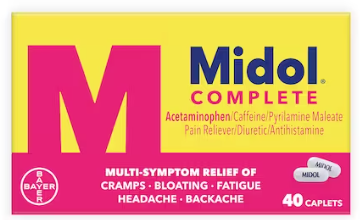Get Rid Of Folliculitis And Acne On The Buttocks
You would think that after over a decade of battling hormonal acne, I already figured it out, but alas, these painful, throbbing bumps keep popping up all over my body. I’m talking about pimples on the chest, pimples, masks and pimples on the buttocks. And while acne (and acne in general) is normal and extremely common, I still felt like something was missing. For example, no matter how many acne cleansers and body gels I diligently applied to my butt, the bumps would not go away. And that’s when I found out that acne on the buttocks is not as simple as it might seem – in fact, it may not be acne at all.

While, yes, you can still get “classic” buttock pimples (think clogged pores, blackheads, and pimples), these rashes are often other skin conditions masquerading as pimples, such as folliculitis, hidradenitis suppurativa, or follicular keratosis (dw , I will talk about all this below). And to make it even more fun, these conditions all have different causes and treatment requirements, meaning that in order to get rid of butt acne, you first need to know what you’re dealing with.

But this is where I come into play. I spoke with four board certified dermatologists: Neda Mer, MD; Sherine Idris, MD; Tiffany Libby, MD; and Morgan Rabach, MD, for describing each type of “butt acne” and how to treat them. Read on to learn about the main causes of buttock bulges, both acne and non-pimple, as well as the best products and formulas to try at home.
- Available on AMAZON
- Credit: image provided
- SALICYLIC ACID FOG
- Anti-Acne Body Spray Versed Back-Up Plan
- Anti-Acne Body Spray Versed Back-Up Plan
- Available on AMAZON
- Credit: image provided
- GENTLE SCRUB AHA
- Kopari KP Body Bumps Be Gone Exfoliating Body Scrub
- Kopari KP Body Bumps Be Gone Exfoliating Body Scrub
- Available on AMAZON
- Credit: image provided
- LIGHT BODY LOTION
- Body By TPH Vegan Niacinamide Leave-In Body Lotion
- Body By TPH Vegan Niacinamide Leave-In Body Lotion
- Available at Walmart
- Credit: image provided
What causes acne on the buttocks?
Real pimples on the buttocks are caused by an overproduction of sebum, like all pimples everywhere. Hormones, stress, genetics, and your favorite foods can cause oil glands to become overloaded, leading to enlarged pores (yes, even the pores on your buttocks), says Dr. Mehr. As soon as the pores expand, bacteria settle in them, cause inflammation, clog the pores and boom – you have acne on the buttocks. And because you’re sitting on your butt all the time, those pores become particularly easy to get clogged, which is why bumps are so common in just about everyone, Dr. Rabach says.
But—surprise, surprise—butt pimples are rarely real pimples. Because your butt faces so much friction from clothing, sitting, walking, and exercising, as well as sweat and bacteria, it is also a “breeding ground” for all kinds of skin bumps, which leads us to…
The most common types of acne on the buttocks and bumps on the buttocks
Before buying a bunch of lotions and potions that promise to cure butt pimples, you first need to figure out what type of acne you’re dealing with. Here is a very brief and basic breakdown of the most common bumps (although, again, you should definitely see a dermatologist for real confirmation).
clogged pores
Clogged pores are basically the vague, catch-all term for the common acne you’re most familiar with, and yes, it’s entirely possible that you could have actual pimples on your butt. When sebum, dirt, and dead skin cells get into your skin, they clog your pores, forming bumps (which we know look like pimples). “Acne is defined by the presence of comedones, whether they are open comedones, also known as blackheads, or closed comedones, also known as whiteheads,” says Dr. Rabach. Essentially, pimples look like… pimples: a mix of pimples, maybe a few pimples, maybe a cystic pimple – you know how.
folliculitis
Folliculitis occurs when hair follicles become infected and inflamed, resulting in bumps. It is also the most common cause of “buttock acne” faced by both patients and doctors. Folliculitis usually looks like a small number of small red or pink bumps (usually on light skin) or purple or brown (on darker skin) and often have a tiny point that looks like a white dot. But unlike regular pus-filled pimples, folliculitis bumps are the result of inflammation blocking an irritated hair follicle, leading to a mild infection inside the follicle, says Dr. Libby.
Folliculitis and acne may look similar to the untrained eye, but there are some key differences that a dermatologist can easily spot: The bump is inflamed, and the white material associated with the bump is often dead skin and white blood cells,” says Dr. ..Rabach; and (2) while whiteheads often appear as a single bump, folliculitis results in a cluster of whitehead-like bumps of equal size.
Follicular keratosis
Keratosis pilaris (KP) is a condition in which excess keratin builds up in the hair follicles, resulting in small, rough, red or brown (depending on skin tone) bumps, usually found on the backs of the arms, thighs or buttocks. KP boils down to genetics and is very common (hello to the percentage of adults who have it), and while there is currently no way to “cure” follicular keratosis, there are professional and home treatments that can help mitigate it:
Chemical exfoliants, such as glycolic and lactic acids, can help get rid of CP bumps over time. Gentle is best, so start with a lactic acid lotion every other night and gently massage your bumps with an acid-based scrub once a week.
Pulsed dye laser (PDL) treatment can help reduce the red or brown spots of CP by narrowing the red blood vessels in the skin. Treatments can cost up to one session and you will need to have treatments at monthly intervals.
Laser hair removal can help destroy the hair follicle, which will prevent future hair from growing and/or getting trapped under the keratin (one of the current theories behind KP bumps). Prices and frequency vary, but they usually start with one treatment and you’ll need monthly sessions.
purulent hydradenitis
Purulent hidradenitis (HS), also known as acne inversa, is a condition in which the sweat glands become infected and can form large, painful bumps (in mild cases) or large bloody, pus-filled blisters (in severe cases ). SG usually occurs in areas of friction sweating such as the buttocks, armpits, bikini line, and under the breasts, and often appear as giant blind pimples or cystic pimples under the skin. While HS is the least common of all the possible buttock bulges on this list, it’s definitely something to be aware of as it will require a trip to the dermatologist or doctor.
One way to know if you are dealing with hidradentis suppurativa is if your bump looks bigger and more painful than the classic small pimple and/or if the bump keeps reappearing in the same spot (very common for HS). . And even if you’re not sure, be sure to make an appointment with a dermatologist as soon as possible, who can identify HS and intervene before it progresses. Treatment can range from topical antibiotics and oral medications to steroid injections and injectables in severe cases.
Why do I get acne on my buttocks?
The cause of acne on the buttocks depends on what kind of bumps they are. Folliculitis on the buttocks is often caused by rubbing that irritates the hair follicle, while actual pimples are caused by clogged pores on the buttocks with sebum, sweat, dead skin, and dirt. “Common culprits are irritation from clothing that rubs against the buttocks, such as tight-fitting sportswear that can trap sweat, oil and bacteria, and friction or bumps from sitting for long periods of time,” says Dr. Libby.
Dr. Mer also points out that harsh skin care products, an allergic reaction (such as a nickel allergy in a bikini trimmer), or bacterial overgrowth can also be the cause of your bumps, as they all cause the hair follicle to become inflamed. or irritate the skin.
How to squeeze a pimple on the pope?
Ideally, do not squeeze or squeeze pimples on the buttocks. Squeezing can not only increase inflammation (or even spread the infection to other areas of the skin), but also lead to scarring and post-inflammatory hyperpigmentation. You also can’t squeeze out a cyst or boil it (they have no connection to the surface of the skin, so they’re really airtight), and that can also lead to severe inflammation that may require urgent antibiotics. , injection or drainage. Not good.
How to get rid of acne on the buttocks?
To get rid of buttock pimples, you first need a proper diagnosis from a dermatologist, because bulges can only be properly treated when you know what you’re dealing with. While more severe cases of bumps (re:HS and hormonal acne) require a doctor’s attention, folliculitis, classic acne, and follicular keratosis can be treated with a combination of foods and a few lifestyle changes. So, once you’ve made an appointment to see your dermis, start at the bottom.
. Treat buttock pimples with benzoyl peroxide or salicylic acid body wash.
If you’re dealing with real butt pimples, Dr. Libby and dermatologist Sherine Idriss, MD, recommend trying an acne cleanser that contains benzoyl peroxide, which helps kill acne-causing bacteria. To give the benzoyl peroxide enough time to treat your skin before washing it off, Dr. Libby recommends rubbing the shower gel into the shower once a week and leaving it on for three minutes before rinsing off (note: benzoyl peroxide can whiten skin). cloth, so be sure to rinse it well).
If you’re reacting badly to benzoyl peroxide, whether it’s because of an allergy or skin irritation, you can also try salicylic acid, which can help break down clogged pores on your buttocks, whether it’s in a bubble bath or a spot treatment. or skin mist. While BP is better at preventing and treating bacteria-based acne, salicylic acid also has the benefit of being able to smooth out blemishes and lighten dark spots and acne scars when used in leave-on products. for example, toner or moisturizer.
- Use these products to clear your pores ASAP
- BENZOYL PEROXIDE CLEANER
- PanOxyl Antimicrobial Acne Cream Wash , Benzoyl Peroxide
- PanOxyl Antimicrobial Acne Cream Wash , Benzoyl Peroxide
- Available on AMAZON
- Credit: Image provided
- SALICYLIC ACID FOG
- Soft Services Lightening Mist
- Soft Services Lightening Mist
- Available at SOFTSERVICES.CO
- Credit: Image provided
- WASHING WITH SALICYLIC ACID
- Naturium The Perfector Salicylic Acid Shower Gel
- Naturium The Perfector Salicylic Acid Shower Gel
- Available at NATURIO.COM
- Credit: Image provided
- SALICYLIC ACID
- White Clay Acne Treatment Pads , Salicylic Acid First Aid Beauty
- White Clay Acne Treatment Pads , Salicylic Acid First Aid Beauty
- Available on AMAZON
- Credit: Image provided
Smooth your buttocks with an exfoliator
No, you can’t exfoliate buttock bulges – and in fact, trying to treat folliculitis, acne, or PC with a harsh body scrub will only increase inflammation and make your acne worse. Instead, Dr. Mer advises, gently massage your buttocks in the shower with an acid-based body wash and a silicone scraper (this will help remove dead skin so your treatments can penetrate better) and then apply a chemical peel. . when the skin is dry, as an acid buffer. Look for a formula with alpha hydroxy acids (like lactic or glycolic acid) or beta hydroxy acids (like salicylic acid) to help break down clogged pores.
- chemical exfoliants that will help you quickly get rid of spots on the body
- Nolaskinsentials Glycolic Night Cream
- Nolaskinsentials Glycolic Night Cream
- Available at NOLASKINSENTIALS.COM
- Skinfix Resurface+ AHA/BHA Niacinamide Exfoliating Pads
- Skinfix Resurface+ AHA/BHA Niacinamide Exfoliating Pads
- Available at SEFORA
- Credit: Image provided
- Neutrogena Skin Perfecting Daily Liquid Exfoliant
- Neutrogena Skin Perfecting Daily Liquid Exfoliant
- Available at ULTA BEAUTY
- Credit: Image provided
- Shani Darden Lactic Acid AHA Exfoliating Serum
- Shani Darden Lactic Acid AHA Exfoliating Serum
- Available at SEFORA
Credit: Image provided
. Treatment of acne on the buttocks with prescribed antibiotics
If you’ve tried everything (all the body washes, scrubs, spot treatments, and lifestyle changes listed below) for at least six weeks in a row and you’re still struggling with acne, it’s time to make an appointment. with a dermatologist to discuss medications that soothe inflammation. and reduce bacteria that can lead to buttock acne, folliculitis, and HS. Your dermatologist may prescribe you topical antibiotics, such as mild clindamycin lotion or clindamycin-retinol serum, or may suggest a short-term course of oral antibiotics, such as broad-spectrum doxycycline or the new Seysara acne antibiotic. .
. Try hormonal remedies for acne on the buttocks
If topical antibiotics or home remedies do not help reduce buttock acne, a doctor may prescribe spironolactone or oral contraceptives, which help reduce and regulate the body’s production of androgens (also known as “sex” hormones, such as testosterone, which can cause the skin to produce androgens). search). oils).
Another super effective remedy for stubborn acne? Isotretinoin, also known as Accutane, which permanently reduces sebaceous glands. While it’s definitely not as scary as you’ve been led to believe, it still requires regular blood work and monitoring, so be sure to discuss any concerns or questions with your doctor, as always.
. Clear your pores with a chemical peel
If your pimples on your buttocks are the result of clogged pores (see: You Sweat All the Time or Have Naturally Oily Skin), Dr. Rabach recommends trying an in-office chemical peel to stimulate the exfoliation of dead skin. Chemical peels use an acid-based solution (such as glycolic, lactic, almond, and TCA) to remove the top layers of the skin, which can reduce hyperpigmentation, stimulate collagen production (when used professionally), and smooth out uneven texture. even when you use it on your butt.
Chemical peels come in different strengths, the strongest are only available at a dermatologist’s office or medical center, and can be done once a week. But for a less intense treatment, you can also try twice-weekly at-home chemical peels, which rely on the lower strength of chemical exfoliants themselves to remove dead skin and smooth out the texture of acne on the buttocks.
Important note: High-potency chemical peels will only help with true acne, not keratosis follicularis, hidradenitis suppurativa, or folliculitis (and may exacerbate these conditions). So, as always, talk to your dermatologist first before taking any chances.
. Wear light, dry fabrics to reduce irritation.
Wearing non-wicking fabrics like nylon and polyester “forms a cellophane barrier around your skin,” says Dr. Mehr, trapping sweat and bacteria on your buttocks. This barrier not only pushes bacteria into your pores, Dr Mer notes, but the mixture of sweat and friction can also lead to inflammation that causes folliculitis, clogged pores that cause acne, and irritation that aggravates HS.
If it is absolutely necessary to wear tight sportswear, choose sportswear made of breathable cotton to prevent sweat from getting on your skin, take it off as soon as you get home and ideally wash your body quickly, which will lead us to…
. Take a quick shower after working up a sweat
When you sit in sweaty clothes, dirt, oil, sweat and grime are left on your skin which can irritate your buttocks. Once you’re done with your sweat session, hop in the shower and rinse off the bubble bath. If you can’t shower right away (long drive home, lunchtime work, drinks after Barry’s class, etc.), scrub your buttocks with an unscented body wash, then spray. spray with salicylic acid before changing into dry clothes.
. Treatment of folliculitis with laser hair removal
Because folliculitis is caused by inflammation of the hair follicle, it can often be treated and prevented with laser hair removal. “The key with folliculitis is to destroy the root of the hair follicle,” Dr. Mer says, adding that the bacteria that cause folliculitis often enter your body “through the pores, hunting down the hair follicle.” When you destroy your hair, the opening to the follicle narrows, making it difficult for bacteria to enter and causing inflammation. Sure, laser hair removal isn’t a panacea for folliculitis, but it can still be a great tool to prevent future bumps.
. Avoid using too many active ingredients.
Butt bumps can be painful, inflamed, and itchy, so even if you think rubbing and burning the bumps is the solution, too many chemicals (also known as active ingredients) will only exacerbate and inflame your problems. The key to treating pimples on buttocks — or any buttock bulge — is to start slowly and gently, even if you really don’t want to.
Example: If you shower every day, don’t use an intense acne cleanser and a high-strength acne pad every day. Instead, spread out your active ingredients and use only one per day. Skip the exfoliating pad on days you use benzoyl peroxide or salicylic acid, then opt for a gentle cleanser with tea tree oil, niacinamide, glycerin and panthenol to soothe skin and lock in moisture all the way through. week. And be sure to always apply a light, non-greasy moisturizer, especially on days you use high-potency chemicals.
If you’ve overdone it and are now dealing with itchy, inflamed skin, or one of your pimples is especially painful and throbbing, apply one percent hydrocortisone cream twice a day for five days to reduce redness and inflammation. If you find you still need a steroid cream after a week, this is your (millionth) cue to book an appointment with a dermatologist for a targeted product approach.
- Soothe your sore buttocks with these products
- ZitSticka Silk Shake Probiotic Shower Gel
- ZitSticka Silk Shake Probiotic Shower Gel
- Available at ULTA BEAUTY
- Credit: Image courtesy
- The Body Shop Tea Tree Body Cleansing Gel
- The Body Shop Tea Tree Body Cleansing Gel
- Available on AMAZON
- Credit: Image courtesy
- Beneath Your Mask Heal – Vegan Whipped Skin Souffle
- Beneath Your Mask Heal – Vegan Whipped Skin Souffle
- Available from CREDO BEAUTY
- Credit: Image courtesy
- Neutrogena Hydro Boost Moisturizing body gel cream without fragrance
- Neutrogena Hydro Boost Moisturizing body gel cream without fragrance
- Available on AMAZON
- Credit: Image courtesy
Change laundry products
Folliculitis and follicular keratosis can easily be caused by harsh chemicals, scrubs, and even seemingly harmless products like fragrances and dyes. Surprisingly, laundry detergents, fabric softeners, and dryer sheets can leave irritating marks on the skin that can aggravate pimples or bumps on the buttocks, especially in people with sensitive skin. Switch to hypoallergenic, fragrance-free laundry detergents (see “free and clear” on the label), wash your sheets and clothes again, and see if your skin starts to calm down after a few weeks.



